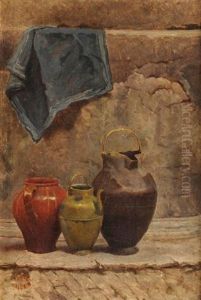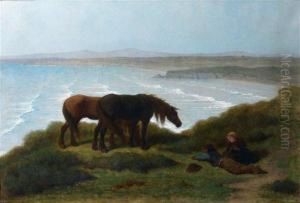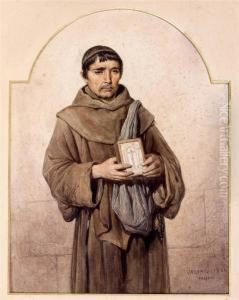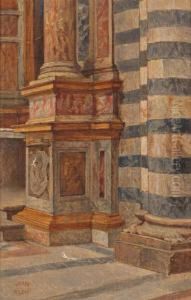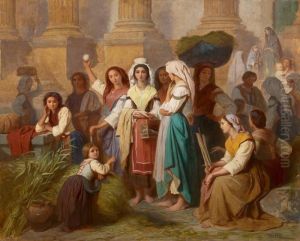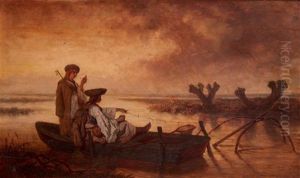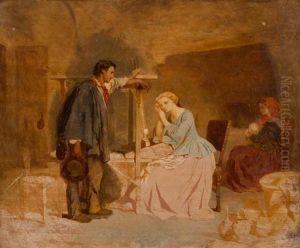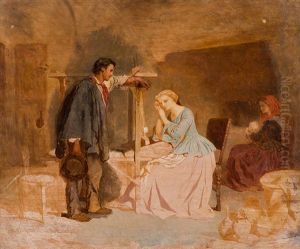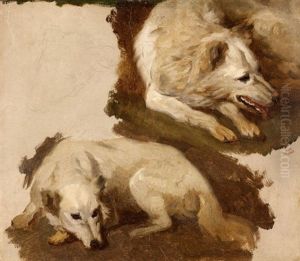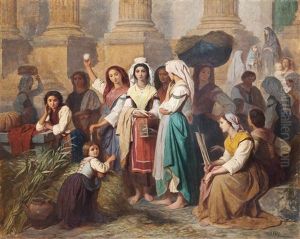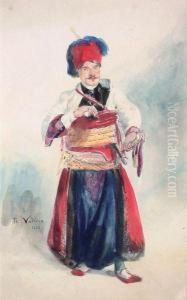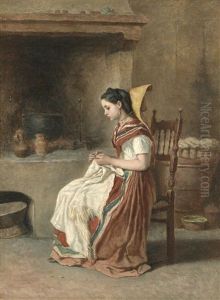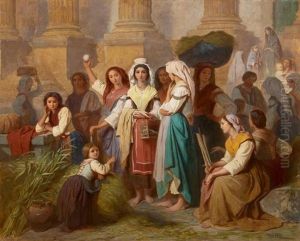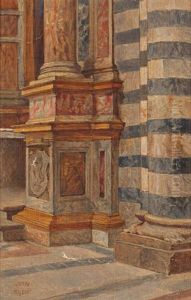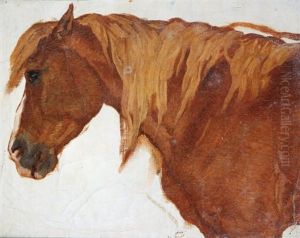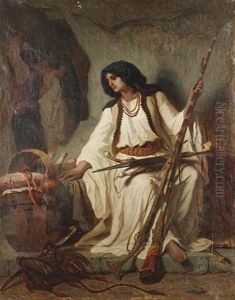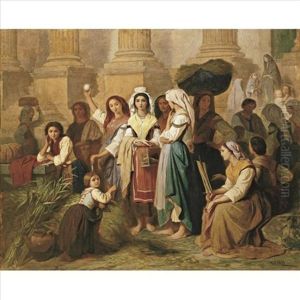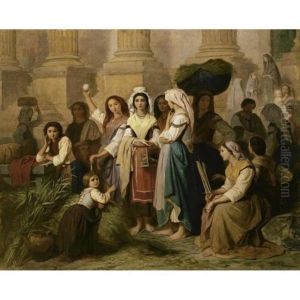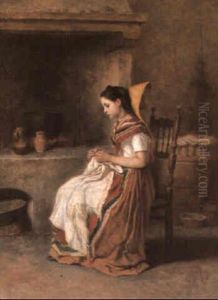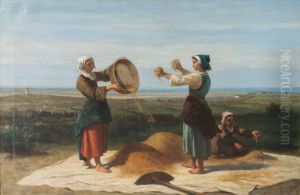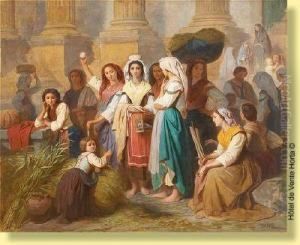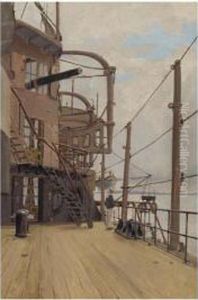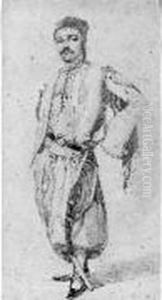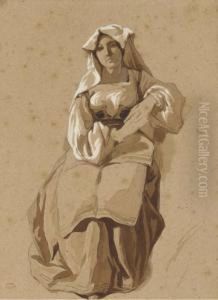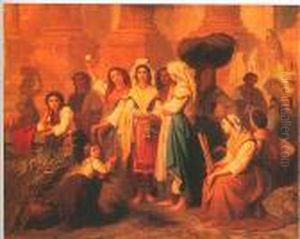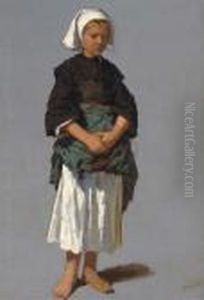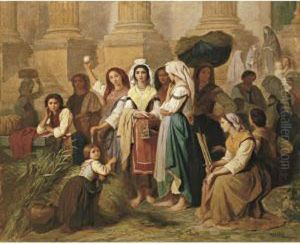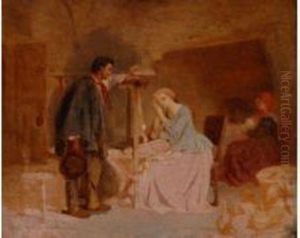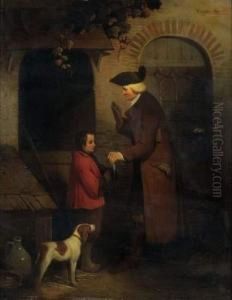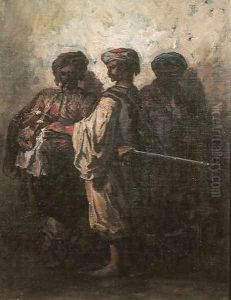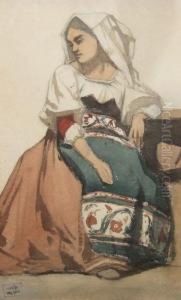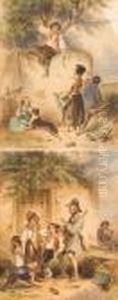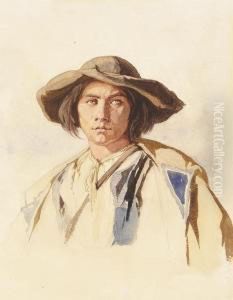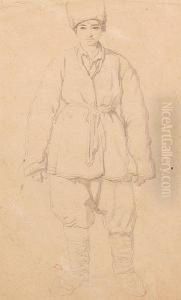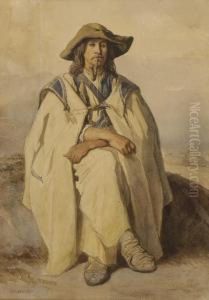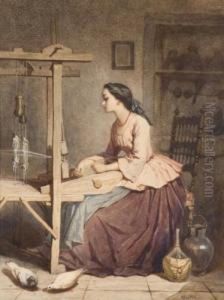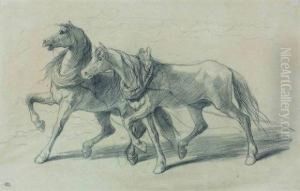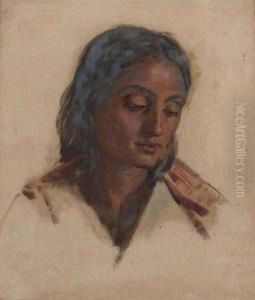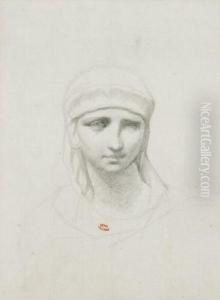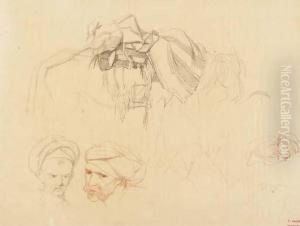Theodore Valerio Paintings
Théodore Valério was a French artist, born in 1819 in Hericourt, Haute-Saône, France. His full name was Hyacinthe Théodore Valério, and he was known for his work as a painter, lithographer, and illustrator. Valério's artistic pursuits began early in life, and he was recognized for his talent at a young age. He studied art in Paris, where he was influenced by the prevailing Romantic movement, a style that often reflected a fascination with history, nature, and the exotic.
During his career, Valério became particularly renowned for his ethnographic depictions of people and places. He was an avid traveler and spent considerable time in the Alsace region and other parts of Europe. His travels also took him to Hungary and Transylvania, where he developed a deep interest in the local cultures. Valério's work stands out for its detailed portrayal of the costumes, customs, and daily life of the people he encountered during his travels.
His lithographs and illustrations brought him considerable acclaim, with his works published in various travel books and journals of the time. Valério's ability to capture the essence of a culture in his prints made them highly sought after by the public and collectors. Beyond human subjects, Valério also had a keen eye for capturing landscapes and architectural works, imbuing them with the same level of detail and attention as his ethnographic studies.
Théodore Valério's contribution to the art world is significant for his ethnographic accuracy and the artistic quality of his representations. His work provides historical insight into the cultures and landscapes of the 19th century, offering a window into the past through the eyes of a meticulous and talented observer. Valério's legacy is preserved through the prints and paintings that continue to be appreciated by art historians and enthusiasts alike. He passed away in 1879, leaving behind a body of work that remains influential and continues to be studied for its artistic and cultural value.
